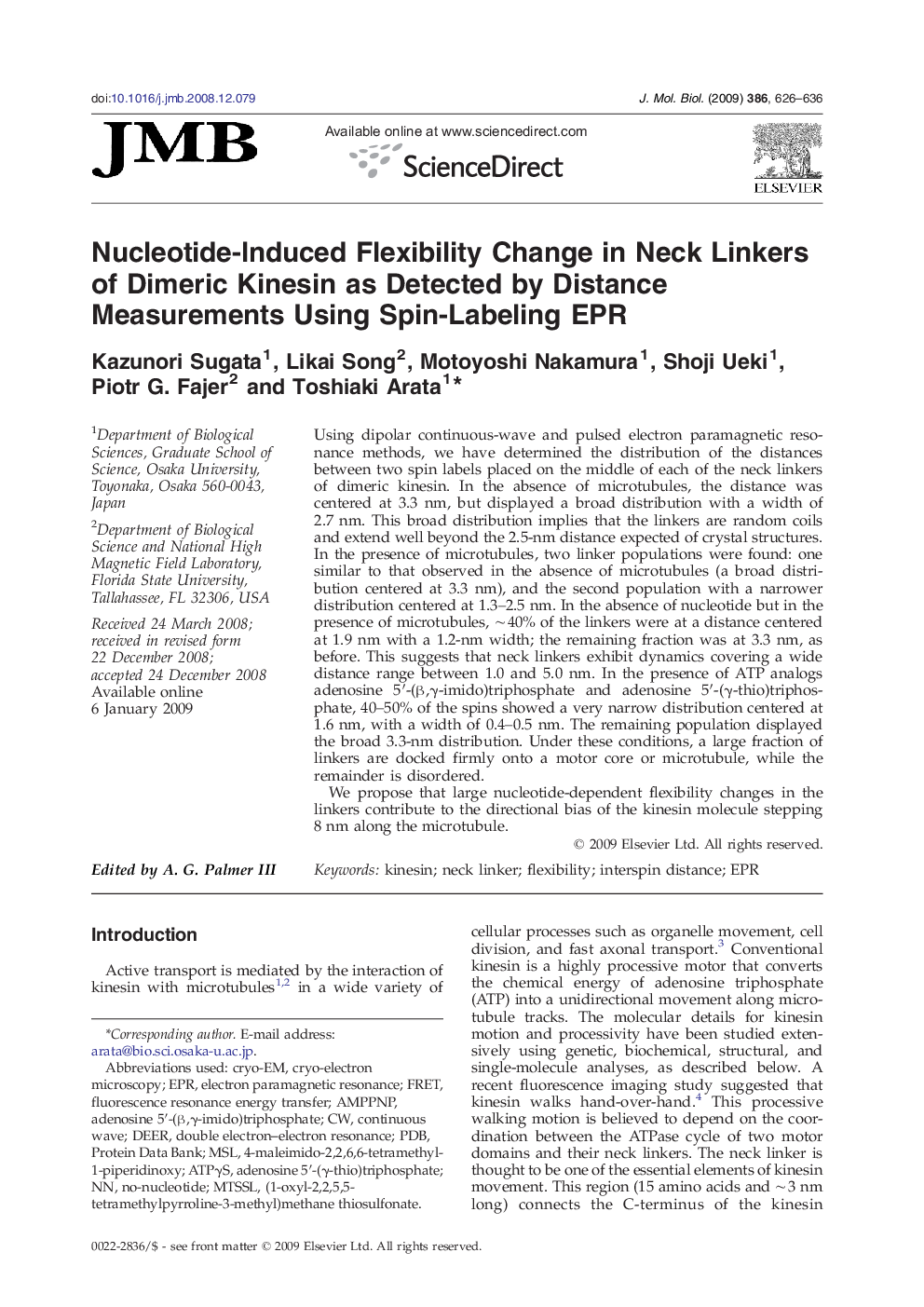| Article ID | Journal | Published Year | Pages | File Type |
|---|---|---|---|---|
| 2186894 | Journal of Molecular Biology | 2009 | 11 Pages |
Using dipolar continuous-wave and pulsed electron paramagnetic resonance methods, we have determined the distribution of the distances between two spin labels placed on the middle of each of the neck linkers of dimeric kinesin. In the absence of microtubules, the distance was centered at 3.3 nm, but displayed a broad distribution with a width of 2.7 nm. This broad distribution implies that the linkers are random coils and extend well beyond the 2.5-nm distance expected of crystal structures. In the presence of microtubules, two linker populations were found: one similar to that observed in the absence of microtubules (a broad distribution centered at 3.3 nm), and the second population with a narrower distribution centered at 1.3–2.5 nm. In the absence of nucleotide but in the presence of microtubules, ∼ 40% of the linkers were at a distance centered at 1.9 nm with a 1.2-nm width; the remaining fraction was at 3.3 nm, as before. This suggests that neck linkers exhibit dynamics covering a wide distance range between 1.0 and 5.0 nm. In the presence of ATP analogs adenosine 5′-(β,γ-imido)triphosphate and adenosine 5′-(γ-thio)triphosphate, 40–50% of the spins showed a very narrow distribution centered at 1.6 nm, with a width of 0.4–0.5 nm. The remaining population displayed the broad 3.3-nm distribution. Under these conditions, a large fraction of linkers are docked firmly onto a motor core or microtubule, while the remainder is disordered.We propose that large nucleotide-dependent flexibility changes in the linkers contribute to the directional bias of the kinesin molecule stepping 8 nm along the microtubule.
